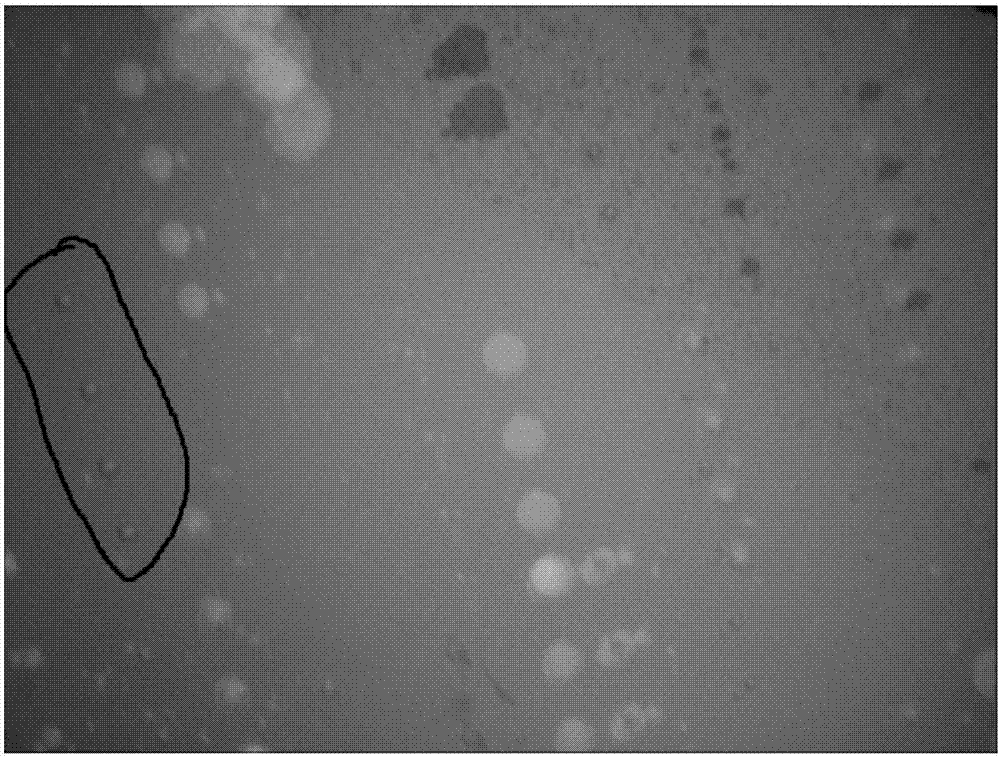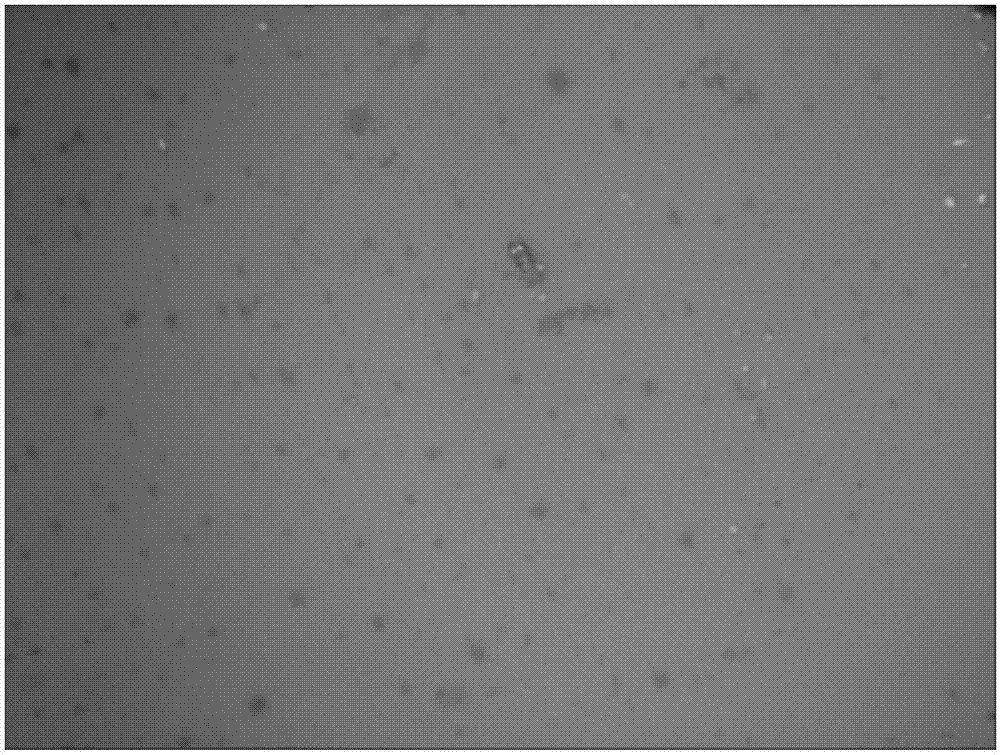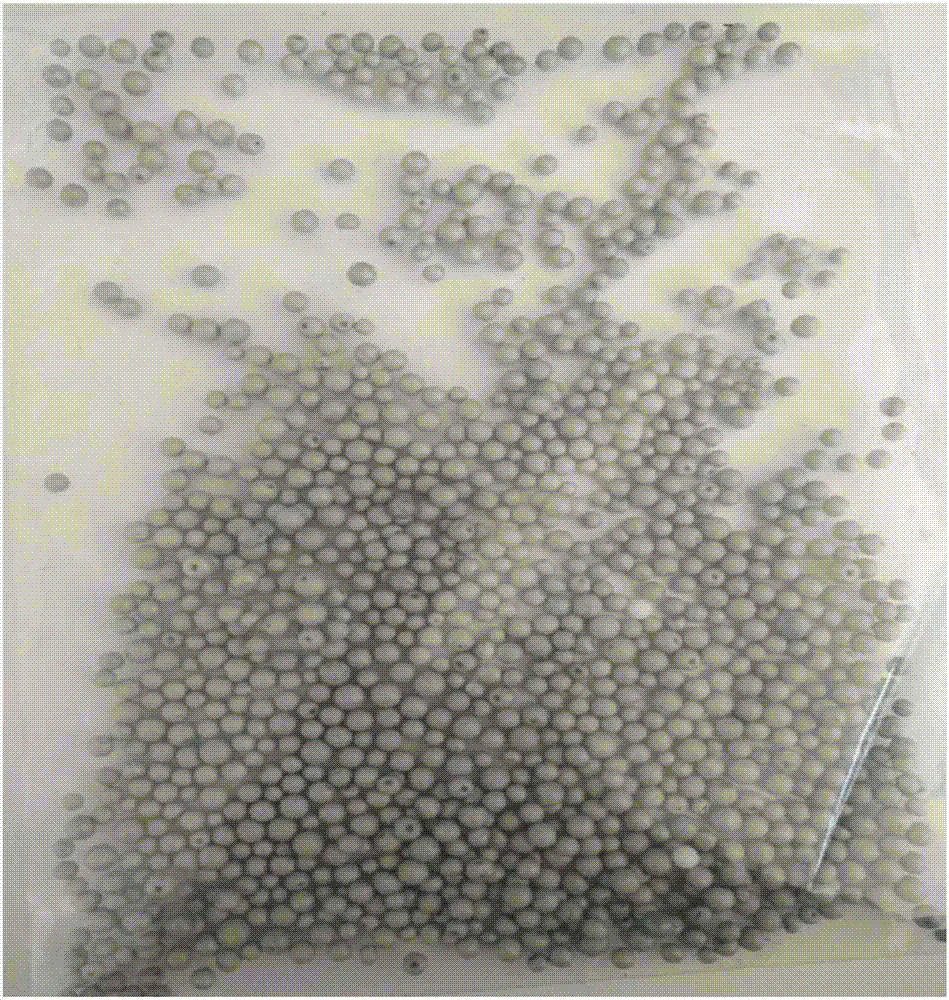A graphene-containing static-electricity-conducting polystyrene foaming material and a preparing method thereof
A technology of polystyrene foaming and polystyrene, which is applied in the field of polystyrene foaming materials and its preparation, can solve the problems of complex graphene preparation process, human dust hazards, and large amount of addition, so as to improve the perforation of beads Phenomenon, avoiding electrostatic hazards, reducing the effect of perforation problems
- Summary
- Abstract
- Description
- Claims
- Application Information
AI Technical Summary
Problems solved by technology
Method used
Image
Examples
Embodiment 1
[0044] Disperse the surface-treated graphene into styrene to prepare a 0.4wt% graphene styrene dispersion, stir at high speed for 30 minutes, then grind it with a sand mill for 0.5 hour, and 20kg of the above-mentioned ground graphene styrene Add ethylene slurry, 30kg deionized water, and 60g compound dispersant to the reaction kettle in turn, stir for 30 minutes for pre-dispersion, the stirring speed is 280 rpm, add 200g of low-temperature initiator benzoyl peroxide, start to heat up, heat up Add 20g of high-temperature initiator tert-butyl peroxybenzoate to 60°C, continue to heat up to 90°C, add 40g of compound dispersant after constant temperature for 30 minutes, and then react at constant temperature for 5.5 hours, after that, add 1kg of pentane, and continue the reaction Heat up the kettle to make the temperature of the reactor reach 120°C and the pressure reach 0.6 MPa, and keep it at this temperature and pressure for 4 hours, stop the heating after the reaction is comple...
Embodiment 2
[0046] Disperse the surface-treated graphene into styrene to prepare a 0.6wt% graphene styrene dispersion, stir at high speed for 30 minutes, then grind it with a sand mill for 1 hour, and 20 kg of the above-mentioned ground graphene styrene Ethylene slurry, 40kg deionized water, and 80g compound dispersant were added to the reaction kettle in turn, stirred for 30 minutes for pre-dispersion, the stirring speed was 280 rpm, and 300g of low-temperature initiator benzoyl peroxide was added, and the temperature began to rise. Add 40g of high-temperature initiator tert-butyl peroxybenzoate to 60°C, continue to heat up to 90°C, add 80g of compound dispersant after constant temperature for 30 minutes, and then react at constant temperature for 6 hours, after that, add 1.1kg of pentane, and continue to The reaction kettle is heated up so that the temperature of the reaction kettle reaches 120° C. and the pressure reaches 0.6 MPa, and is maintained at this temperature and pressure for 4...
Embodiment 3
[0048] Disperse the surface-treated graphene into styrene to prepare a 0.8wt% graphene styrene dispersion, stir at high speed for 30 minutes, then grind it with a sand mill for 1.5 hours, and 20 kg of the above-mentioned ground graphene styrene Add ethylene slurry, 50kg deionized water, and 100g compound dispersant to the reaction kettle in turn, stir for 30 minutes for pre-dispersion, the stirring speed is 280 rpm, add 400g of low-temperature initiator benzoyl peroxide, start to heat up, heat up Add 60g of high-temperature initiator tert-butyl peroxybenzoate to 60°C, continue to heat up to 90°C, add 100g of compound dispersant after constant temperature for 30 minutes, and then react at constant temperature for 6.5 hours, after that, add 1.2kg of pentane, and continue to The reaction kettle is heated up so that the temperature of the reaction kettle reaches 120° C. and the pressure reaches 0.6 MPa, and is maintained at this temperature and pressure for 4 hours. After the react...
PUM
 Login to View More
Login to View More Abstract
Description
Claims
Application Information
 Login to View More
Login to View More - R&D
- Intellectual Property
- Life Sciences
- Materials
- Tech Scout
- Unparalleled Data Quality
- Higher Quality Content
- 60% Fewer Hallucinations
Browse by: Latest US Patents, China's latest patents, Technical Efficacy Thesaurus, Application Domain, Technology Topic, Popular Technical Reports.
© 2025 PatSnap. All rights reserved.Legal|Privacy policy|Modern Slavery Act Transparency Statement|Sitemap|About US| Contact US: help@patsnap.com



